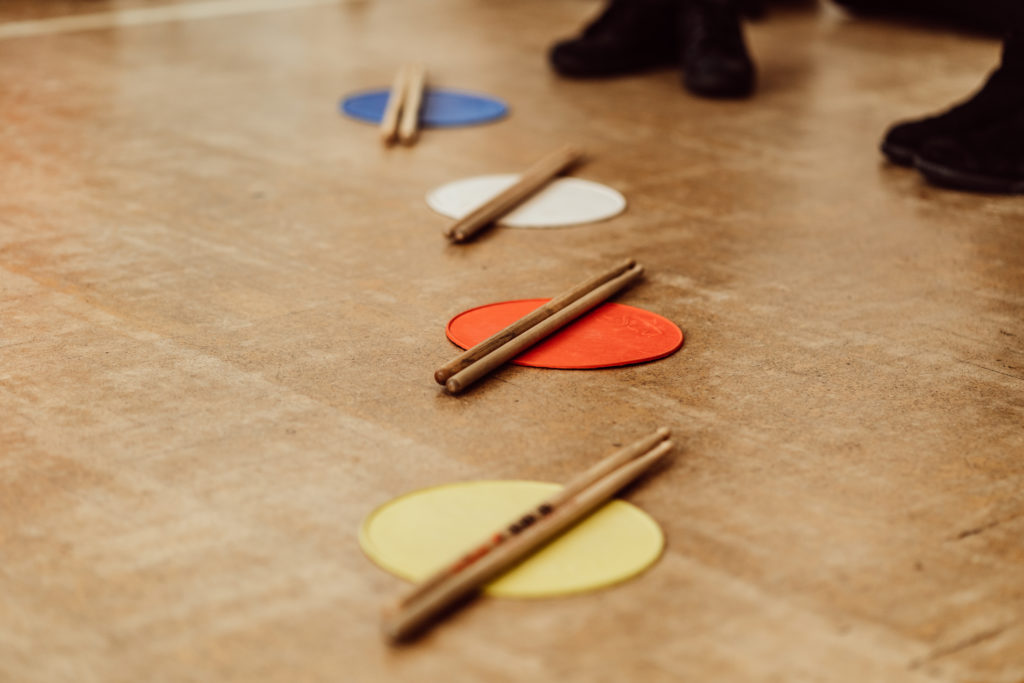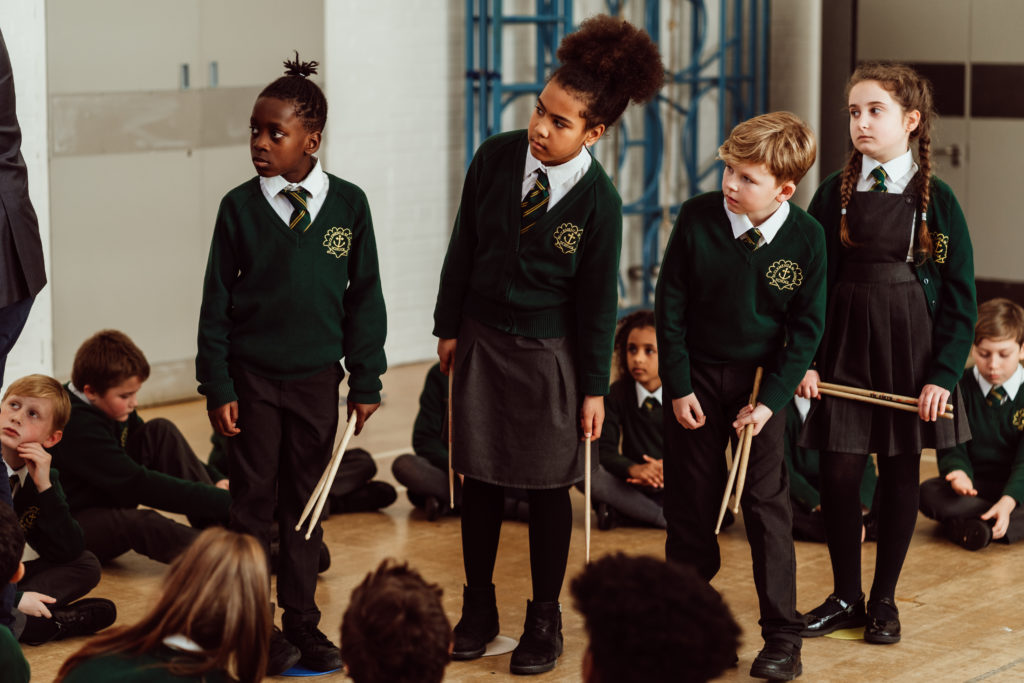
Lay a foundation. Build on it brick by brick. If it’s rhythm and syncopation you’re after, try something unexpected – like ABBA’s Dancing Queen or Oasis’ Wonderwall. That’s what Sing Education Schemes of Work do – start simple, increase complexity, use themes to introduce musical learning elements. Never the same, never boring.


At Sing Education, our music curriculum is broken up into Schemes of Work. A Scheme of Work is a unit of six or eight weeks of musical study which a class completes over the course of one half term. Key musical terms are woven into every single session and these are always accessed through active music-making. This is the hallmark of Sing Education curricular music.
Each Scheme of Work is made up of six to eight detailed lesson plans, complemented by a general overview as well. Each unit is focused around a topic or musical element. For instance “Music Around the World” is one Scheme of Work, “Exploring Pop Music” is one and “Exploring Pulse and Rhythm” is another. Each Scheme of Work builds on prior knowledge and musical experience. It also teaches and presents new elements or ideas, reinforces terms already learnt and prepares children for what they are going to learn in the next unit. Schemes of Work fit alongside the progression map we’ve created to be in complete alignment with the new Ofsted requirements. Schemes of Work make our music planning and teaching methodology really clear for classroom teachers and for students. Teachers always know what the children are learning today, as well as why they are learning it now. They know the prior knowledge upon which the lesson is based, as well as how does the lesson prepare pupils for the future. This planning and intentionality underlies all that we do to deliver our music curriculum.
The reason we break lessons up into Schemes of Work is to enable good musical progression. We firmly believe that musical concepts, skills and techniques should be learned in sequence from the simple to the complex – and not the other way round.
This is very much in line with the Kodály approach, upon which we draw heavily. Like with most other academic subjects, it’s quite important that you learn the simple things first and have a real understanding before you move on to something more complex. For some reason in music – and perhaps because of a misplaced emphasis on the ability to “perform” – it often happens that children are expected to learn the most complex elements of musicianship first and then to go back and rework that understanding to extract and consolidate the fundamentals. This presents difficulties, however – especially for young learners – because they frequently don’t possess enough deep understanding to successfully make the leap up to the next level of musicality. They can replicate a sound, a rhythm, a fingering technique but can’t understand what they’ve done, even if the technical or mechanical outcome is satisfactory. That’s why we find Schemes of Work are vital to ensuring that learning progresses from simple to complex at all times and is accomplished in small steps that suit the child.

Every Scheme of Work has music theory and musicianship woven into it but there are some real focused Schemes of Work where lots of elements are presented and reinforced. That tends to come in the middle of a year where they’ve been prepared, they’ve got a really good understanding and experience of the term and are really into the swing of things before it gets a little bit more complex and some deep learning takes place. Then the rest of the year, they can practice it, going back to the three Ps, prepare, present, practice. They can practice it through the year, through exploring different genres and topics.
We find many useful opportunities to engage the “Prepare, Present, Practice” framework. Our Curriculum Architecture is built on this principle – and it threads through our Scheme of Works, as well as linking one Scheme of Work into another and so on. Prepare, Present, Practice is always there. It ties in with the Progression Map we provide each school and with our incorporation of Ofsted objectives and requirements.
Schemes of Work also ensure a really enriching and diverse curriculum. They enable classroom teachers to be able to look at the whole year’s curricular map and say, “Wow, okay. So the children will be learning X this term. They haven’t learned about world music yet this year.” From our perspective as educators and curriculum architects, introducing “Music Around the World” as a Scheme of Work means we need to make sure there’s a unit which reinforces pulse because we know pupils haven’t had that element yet. It’s a new element for them and they would benefit from learning about that, understanding it, practicing it and experiencing it in varied settings.
Schemes of Work also ensure that the curriculum remains broad and robust in terms of the genre of music they’re studying, as well as the techniques or theory that pupils may cover. Sing Education makes sure that our children encounter a real variety of music – classical, pop, folk, world, musical theatre, etc. – while providing classroom teachers and the students themselves with a really strong focus for the half term. It gives the children a real sense of anticipation as the unit unfolds and an even more tremendous sense of accomplishment once the unit is done.
Lastly, Schemes of Work are useful because they provide a defined and concise period for handling any particular learning material – meaning that the exploration is for a limited period of time and is conducted in a very focused way. The learning is finite and doesn’t sprawl on and on. For instance, a teacher might take a song and learn it in week one, week two they might explore it a little bit more, week three, they’ll explore another element of the song. By week four, they are exploring a third element of the song but then they might not revisit that song again for an entire year until it appears in another Scheme of Work. In that revisited instance the song would always be alongside other things – it would supplement future learning but never again be the whole focus of an entire lesson. In this way the Scheme of Work provides a container for musical learning and for musical repertoire to sit within that is discreet and packaged up into a neat unit.
The result?
Children remain engaged with the material and teachers can communicate the ideas being taught in that six-week unit fully. They can then confidently move on to a new unit, rather than having to constantly track back over long periods of time repeating what the children have already learnt. Schemes of Work help teachers discover and share something new each time they revisit a piece of music, skill or technique. It’s always onwards and upwards rather and round and round!
